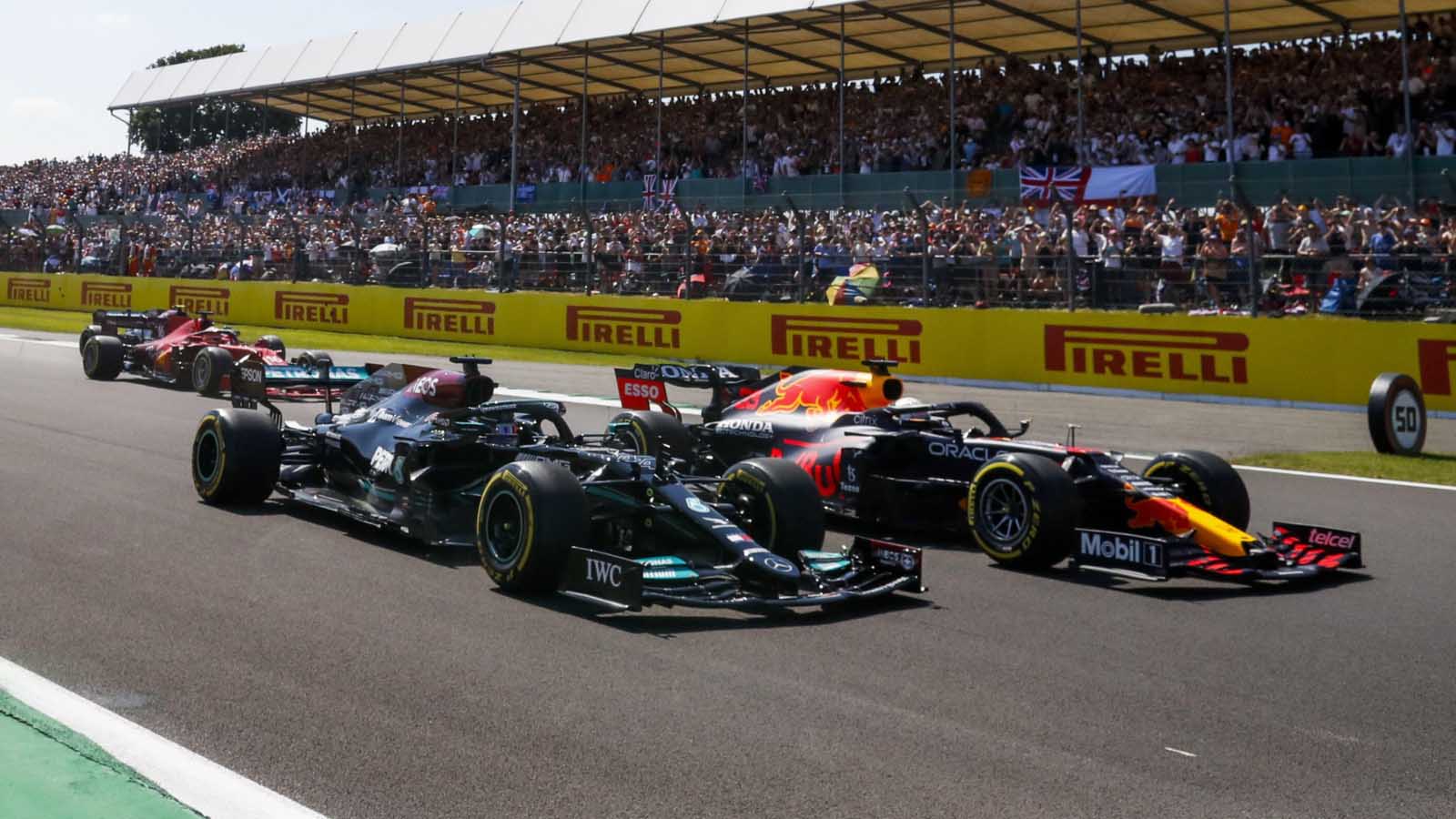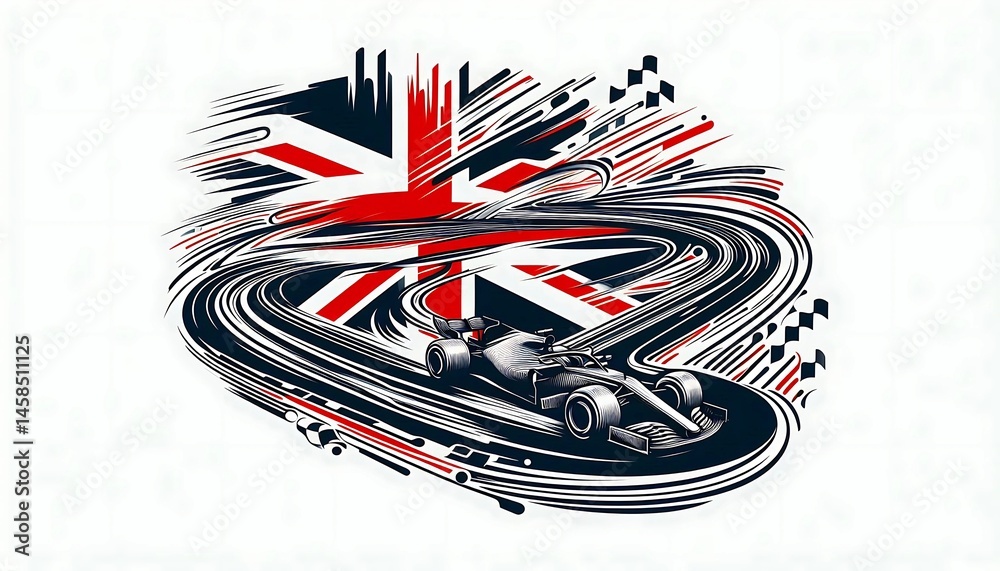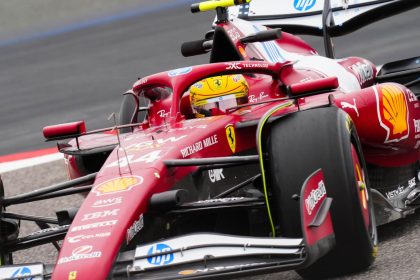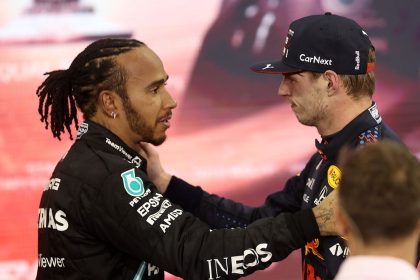If you want to know what it means to be a Formula 1 driver, don’t bother with the PR videos or the endless social media hype. Just watch a lap of Silverstone—preferably from the cockpit, with the telemetry screaming and the driver’s hands dancing at 300 km/h. Silverstone is not just a racetrack; it’s a living, breathing test of courage, precision, and technical mastery. And if you think you can “learn” it in a simulator in a weekend, I have a bridge in Brooklyn to sell you.
- The Anatomy of a Legend: Silverstone’s Shape-Shifting Circuit
- Abbey to Woodcote: Where Heroes Are Made (and Sometimes Broken)
- Abbey (Turn 1): The Commitment Test
- Farm Curve and Village: The Rhythm Breakers
- The Loop and Aintree: Patience and Power
- Brooklands and Luffield: The Art of Traction
- Woodcote: Flat Out, If You Dare
- The Holy Trinity: Maggotts, Becketts, and Chapel
- Copse Corner: Where Bravery Meets Infamy
- Stowe: The Overtaker’s Dilemma
- The Technical Challenge: Why Silverstone Is No Monaco (and Thank Goodness)
- Lap Records and Legends: The Numbers Don’t Lie
- The Evolution of a Classic: Why Silverstone Keeps Changing
- The Real Key to Mastering Silverstone
- Waste a Bit More Time
Let’s take a walk—no, a flat-out sprint—through the most challenging corners and technical puzzles that make Silverstone the ultimate driver’s circuit. And let’s do it with a bit of history, a dash of dry wit, and a healthy skepticism for anyone who claims to have “conquered” this place.
The Anatomy of a Legend: Silverstone’s Shape-Shifting Circuit
Silverstone’s DNA is part WWII airfield, part motorsport cathedral. Since 1950, it’s been the stage for everything from Fangio’s balletic slides to Hamilton’s home-soaked heroics. But don’t let nostalgia fool you: the circuit has changed more times than a team principal’s story after a bad pit stop.
Originally, Silverstone was a flat-out blast around perimeter roads and runways. But as speeds climbed and safety became more than a suggestion, the circuit evolved. Chicanes appeared, corners tightened, and the infamous Arena section was added in 2010 to spice up overtaking and keep the FIA’s clipboard brigade happy. Yet, through all the changes, the soul of Silverstone remains: high-speed corners, technical transitions, and a rhythm that punishes the faint-hearted.
“Silverstone is a great track; it is of course a very historic track but also great fun. It has a lot of fast corners, Becketts and Maggots being my favorite, and there are always loads of fans out in force.”
Max Verstappen
Abbey to Woodcote: Where Heroes Are Made (and Sometimes Broken)
Let’s break down the lap, corner by corner, and see what makes Silverstone such a merciless examiner of talent and nerve.
Abbey (Turn 1): The Commitment Test
The lap begins with Abbey, a high-speed right-hand kink that’s almost flat in modern F1 machinery. Almost. The trick? You need to trust your car’s downforce and your own nerve. A slight lift, a brush of the brakes, and you’re through—unless you’re not, in which case you’re in the gravel, your engineer sighing in six languages.
“Full commitment is required. Depending on your car’s downforce setup, you might need a slight lift. Maintain speed through the corner and position the car to the left for the entry to Farm.”
Farm Curve and Village: The Rhythm Breakers
Farm Curve is a fast left, but it’s just the setup for Village—a tight right-hand hairpin that demands hard braking and a late apex. This is where the lap’s rhythm is interrupted, and where drivers must switch from “brave” to “precise” in a heartbeat.
The Loop and Aintree: Patience and Power
The Loop is a slow, tight left that tests patience. Get greedy on the throttle and you’ll be sideways before you know it. But nail the exit, and you’re rewarded with a slingshot onto Aintree and the Wellington Straight—a prime overtaking zone if you’ve kept your wits about you.
Brooklands and Luffield: The Art of Traction
Brooklands is a medium-speed left, a classic overtaking spot if you’re brave on the brakes. Luffield, a long, tightening right, is all about maintaining momentum and getting back on the power early. It’s a corner that rewards the smooth and punishes the impatient.
Woodcote: Flat Out, If You Dare
Woodcote is a fast right-hander, taken flat in qualifying trim. But don’t get complacent—one mistake here and you’re a passenger, not a driver.
The Holy Trinity: Maggotts, Becketts, and Chapel
If Silverstone has a signature, it’s the Maggotts-Becketts-Chapel complex. This sequence is the stuff of legend, a rapid-fire left-right-left-right that tests everything: car setup, driver reflexes, and the ability to hold your breath for five seconds.
“Lewis Hamilton has compared a lap of Silverstone, especially through this section, to ‘flying a fighter jet.’”
[Internal Knowledge Base]
This is where lap time is made or lost. Get it right, and you’re a hero. Get it wrong, and you’re on the radio apologizing for “losing the rear.” The best drivers—Senna, Schumacher, Hamilton—have all found magic here. The rest? They just try to survive.
Watch a masterclass on Silverstone’s secrets: Nico Rosberg’s in-depth track analysis and hotlap
Copse Corner: Where Bravery Meets Infamy
Copse is a fast right-hander, taken at over 290 km/h. It’s the first real corner after the start/finish line, and it’s where reputations are made—and sometimes shattered.
Remember the 2021 British Grand Prix? Hamilton and Verstappen, wheel-to-wheel, neither willing to yield. The result: Verstappen in the barriers, Hamilton with a penalty, and the F1 world in uproar.
“The most infamous recent incident occurred here when Lewis Hamilton and Max Verstappen collided on the opening lap, sending Verstappen into the barriers at high speed and out of the race. The incident was pivotal in the 2021 championship battle and sparked intense debate.”
[Internal Knowledge Base]
Copse is a corner that demands respect. Treat it lightly, and you’ll be watching the rest of the race from the medical center.
Stowe: The Overtaker’s Dilemma
Stowe comes at the end of the Hangar Straight, a fast right-hander that’s a favorite for late-braking overtakes—and for spectacular mistakes. It’s where Michael Schumacher’s 1999 title bid was derailed by a brake failure and a broken leg. It’s also where countless drivers have tried (and failed) to out-brake their rivals, only to end up in the run-off.
“Michael Schumacher suffered a brake failure approaching Stowe, crashed heavily, and broke his leg, sidelining him for much of the season.”
[Internal Knowledge Base]
The Technical Challenge: Why Silverstone Is No Monaco (and Thank Goodness)
Silverstone is not “tricky” in the way Monaco is. There are no walls to brush, no hairpins to tiptoe around. Instead, Silverstone is about flow, rhythm, and the relentless pursuit of speed. The track rewards those who can string together high-speed corners with surgical precision. One mistake, and your lap is ruined—not by a barrier, but by lost momentum.
“Silverstone is challenging, but not in a tricky way—more like high-speed, precision-focused difficult. The track rewards rhythm and momentum. One mistake can mess up an entire sector.”
There are few heavy braking zones, so opportunities to make up time are scarce. The open layout means wind and weather can play havoc with grip. And yet, the wide run-offs and modern surfaces mean you can push the limits—if you dare.
Lap Records and Legends: The Numbers Don’t Lie
The current lap record at Silverstone is 1:27.097, set by Max Verstappen in 2020. That’s not just a number; it’s a testament to the relentless evolution of F1 technology and the bravery of the drivers who push the limits.
| Year | Driver | Team | Lap Time |
|---|---|---|---|
| 2020 | Max Verstappen | Red Bull | 1:27.097 |
But records are made to be broken. Every year, the bar is raised, the margins shrink, and the challenge intensifies.
The Evolution of a Classic: Why Silverstone Keeps Changing
Silverstone has never stood still. From its airfield origins to the modern Arena layout, the circuit has evolved to meet the demands of safety, spectacle, and the ever-increasing speed of F1 cars.
- 1970s: Chicanes added after massive accidents.
- 1980s-90s: More technical sections to slow the cars and improve safety.
- 2010: Arena section introduced for better overtaking and fan experience.
The reasons are always the same: keep the drivers safe, keep the fans entertained, and keep the spirit of Silverstone alive.
The Real Key to Mastering Silverstone
So, what’s the secret? Is it raw speed? Technical precision? Bravery? The truth is, it’s all of the above—and then some. Silverstone demands a driver who can adapt, who can find the rhythm, and who can push to the edge without falling off.
“Let’s wait for the third race before calling anyone a legend.”
Pedro, your humble columnist
The best drivers—those who master Silverstone—are the ones who respect its history, embrace its challenges, and never, ever stop learning.
Waste a Bit More Time
If you’ve made it this far, you’re either a true fan or you’ve lost a bet. Either way, here are some links to keep you entertained (and maybe even informed):
- How to Master Silverstone – Sim Racing Guide to Win all your Races
- Silverstone Track Guide – Coach Dave Academy
- How to Master the Silverstone F1 Track | Nico Rosberg – YouTube
- Silverstone Circuit | F1 Tracks – F1 Chronicle
- Ultimate Track Guide: How to Experience the British GP – P1 Travel













